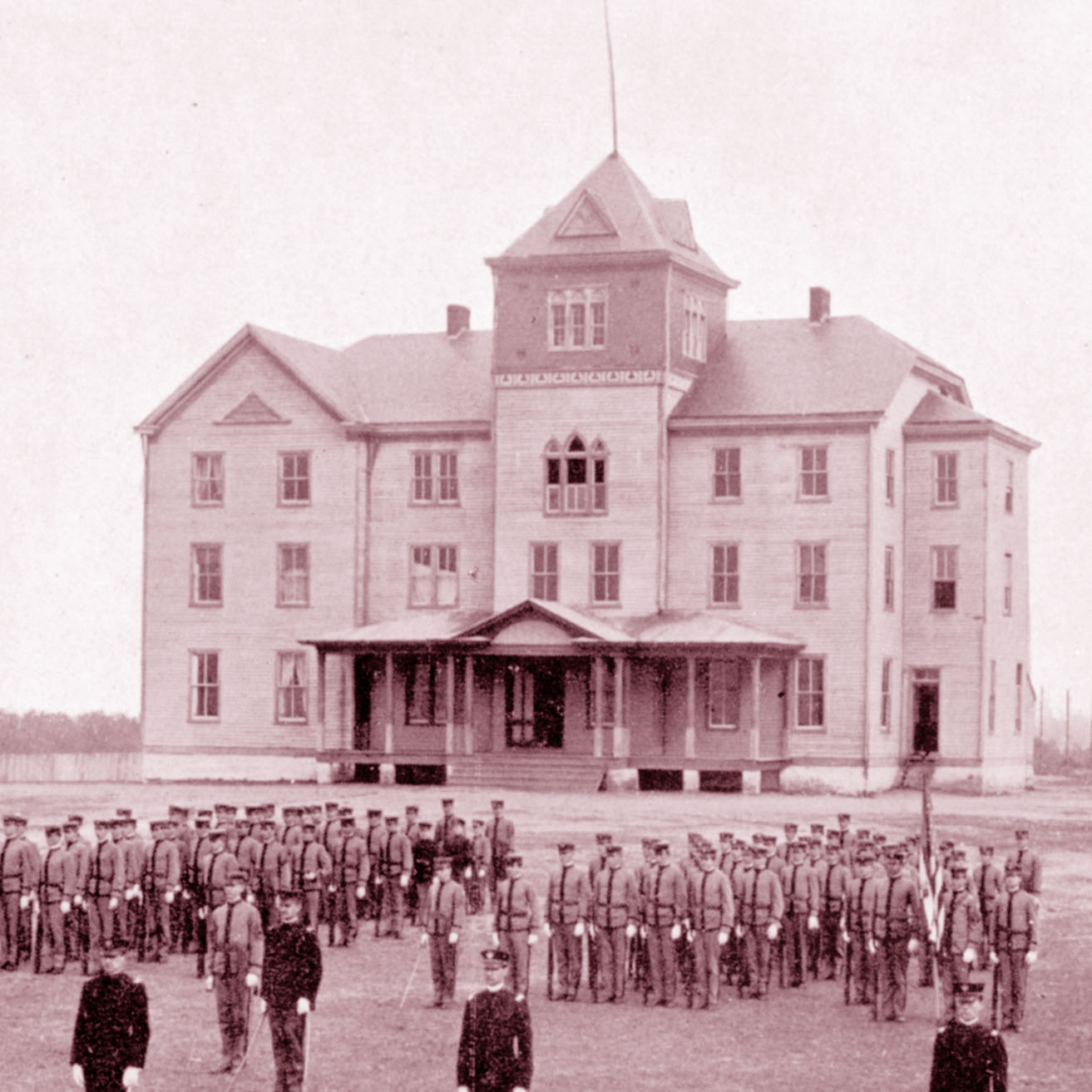

Blog Type:
FUMA Blog Date Posted:
Wednesday, July 18, 2018 Byline:
Dan Thompson
When the Academy was founded in 1898 by the Reverend William E. Hatcher, what we now know as the campus was mostly an empty grove of oak trees belonging to Mr. & Mrs. W. P. Snead. As the school opened in rented rooms across the road from the current campus, the Sneads donated six acres of their land to the school and construction began on Academy Hall in 1900.
Completed in 1902, Academy Hall (later renamed Snead Hall after Captain Charles Goodall Snead, another one of the many Sneads of Fork Union involved in the early leadership of the school), the building was a three-story wooden structure that became the center of the school's campus life.

Mr. & Mrs. W. P. Snead donated another 11 acres of land in 1902 and construction began on the school's second building, the Armory, completed in 1905.

The Academy's signature building, Hatcher Hall, was added to the campus in 1916 and was designed in a Military Gothic architectural style expressly to serve as the school's "brand image," looking very reminiscent of the building styles of Virginia Military Institute.

Within first 25 years of Fork Union Military Academy, these three buildings were built and formed the heart of the school campus.

In January of 1923, however, a tragedy struck this small campus that threatened the very continued existence of the school itself.
In early January of 1923, a fire destroys the Armory building. Arson is suspected.

Just days later, Snead Hall was destroyed by fire. Once again, arson was suspected as the source of the flames.

The destruction wrought by these devastating fires throws Fork Union Military Academy into crisis. Tents are pitched on campus to house classes and activities for the remainder of the school year and desperate meetings are held to determine the young Academy's future, if a future even existed for the heavily damaged school.
Could the school raise the money needed to rebuild its campus in the wake of such a tragic series of events? Would the school be forced to close? Even if new buildings could be constructed, would the school be ready to reopen for classes in the fall of 1923?
Through the Herculean efforts of men like Charles Goodall Snead and many benefactors including Baptist churches across the state of Virginia, two new buildings were raised on campus in the few short months available. A gymnasium was constructed to replace the activity space lost in the Armory, and a barracks building was created and named Snead Hall.
Both buildings were constructed of brick and stucco, designed to be as fireproof as possible.
For some reason, the location of these two buildings were reversed in their new versions: the barracks was placed near the spot where the Armory had stood and the gymnasium was built near the spot where the original Snead Hall had stood.



Like the Phoenix of Greek mythology, the campus of Fork Union Military Academy was rebuilt from the ashes of its predecessor, thus beginning the cycle of campus growth and regeneration seen throughout the years since.
These great buildings of our history represent the indomitable spirit of Fork Union Military Academy, and served not as unchangeable icons planted permanently on the campus, but as vivid reminders that even against the steepest challenges, the Academy would continue to grow, build, rebuild, regenerate, and flourish.
The Alumni Gymnasium and Snead Hall were built in a hurry, designed to provide a quick solution to an immediate problem. They each stood for generations as the physical evidence that Fork Union Military Academy refused to surrender in defeat to negative circumstances, but would fight ceaselessly to continue its mission no matter the odds stacked against it.
Snead Hall was razed and replaced by Jacobson Hall in the fall of 2012.
This week, the demolition of the old gymnasium building began.
While these buildings have housed many memories and losing them is like the death of a faithful friend, we know that like the Phoenix, the spirit of Fork Union Military Academy is continuing to regenerate, regrow, and renew itself, carrying the school's mission forward into the future once more.

Connect with Dan on LinkedIn